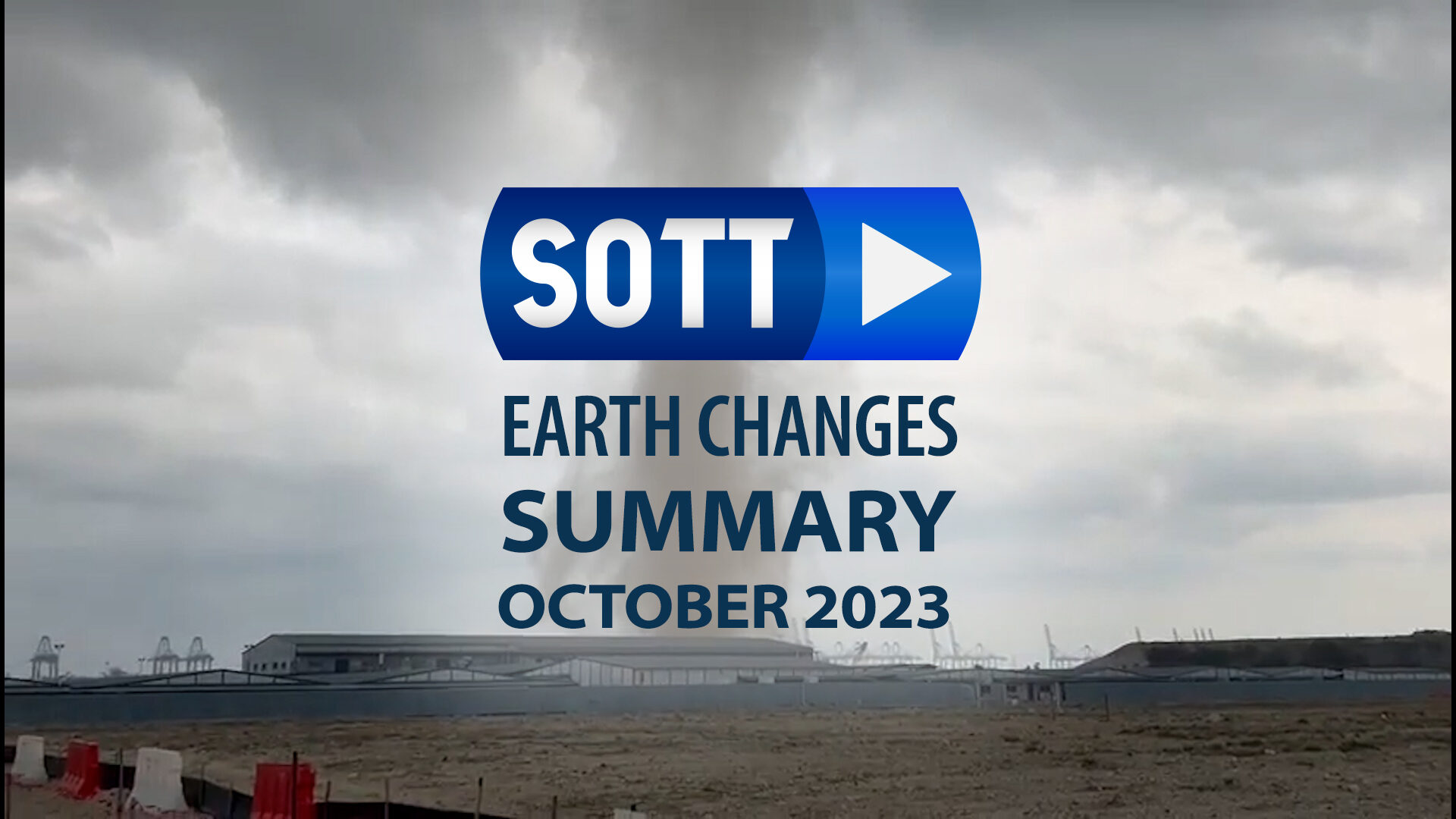Comment: UPDATE 14 Nov 2023
YouTube appears to have "terminated" the entire SOTT Media channel - which archives 10 years' worth of monthly Earth Changes Summary videos - after some jealous 'extreme weather upstart channels' claimed copyright on several seconds' worth of footage used in several 2023 Earth Changes Summary videos. Fair Use by an all-volunteer staff working for a non-profit organization apparently means nothing to ruthless corporate mercenaries who are only in it for the clicks and notoriety. Unless or until our channel is restored on YouTube, SOTT Summary videos will be posted on our Odysee channel.
As we approach the midpoint of Solar Cycle 25, which has had the lowest solar activity in about 200 years, we are experiencing cooler-than-average temperatures and unseasonable snow across the globe.
The Old Farmer's Almanac predicts a harsh winter for the Northern Hemisphere, with above-normal snowfall in most snow-prone areas of the U.S., with storms, showers, and flurries continuing into early spring. America's first Arctic blast of the season broke hundreds of low-temperature records and resulted in the most extensive late October-early November snowpack in NOAA records.
Heavy snow blanketed the Rocky Mountains, the northern Plains, the Great Lakes and northern New England, resulting in 17.9% of the Lower 48 being covered by snow by the time the calendar flipped to November - a new record in books dating back to 2003.But the northern hemisphere was not the only one experiencing unseasonable cold temperatures and snow, South Africa got blanketed by snow in Spring!
So far, the signs of a solar minimum-induced ice age are becoming clearer and more present, so prepare accordingly.
October has also been marked by unusually severe storms around the world. In just one week, we've seen eight different tropical cyclones make landfall around the globe, from Yemen to China, Vanuatu, Mexico, and the Leeward Islands.
Some of the most intense storms during this month:
- Acapulco, Mexico: Hurricane Otis caused massive damage with winds of up to 165 mph. The total death toll is still unknown, but the official estimate is 47, with 59 still missing.
- Taiwan: Third strongest storm on record as Typhoon Koinu hits with winds of 212 mph, causing flooding, landslides, and widespread destruction.
- Vanuatu: Lola, the third superstorm in a year, delivers another devastating blow.
- Yemen: Thousands displaced by flooding after Cyclone Tej dumps nearly 16 inches of rain in a matter of hours.
- Madrid, Spain: Storm Aline floods subway stations, submerges streets, and uproots trees.
- Florida, US: Multiple EF-2 tornadoes damaged both coasts.
Our late friend and author Pierre Lescaudron coined the term air spirals for electrical phenomena such as hurricanes, typhoons, tropical storms, tornadoes, and waterspouts:
Electricity seems to play a major role in air-spiral phenomena, including hurricanes. Air spirals are simply the manifestation of electric discharges between the ionosphere and the Earth's surface. The electric potential difference between the clouds and the ground at the bottom is what powers this kind of phenomena.Also this month, two shallow 6.3-magnitude earthquakes killed at least 2,000 people in western Afghanistan, with several aftershocks of the same magnitude leaving a trail of destruction:
[...] Hurricanes are the opposite of lightning bolts: they mostly occur above oceans and usually weaken or die when they reach land. When a massive flow of electrons is pulled up above the ocean, the high conductivity of salt water can provide and conduct free electrons from all adjacent regions, thus offering an almost endless supply of electrons to power the ongoing hurricane. When the hurricane reaches the ground, the electron supply is limited by the poor conductivity of the ground and the hurricane weakens.
Lightning and hurricanes are very similar electric phenomena. Hurricanes are to sea surface what lightning bolts are to ground surface. They are both caused by upward electron flows and they both re-balance electric charges by returning electrons to the ground: rainfall in the case of hurricanes, lightning in the case of electrical storms.McCanney: I also calculated that the warm water theory for hurricane development lacked sufficient energy to account for the energy in these massive storms. We later witnessed hurricanes on Mars where there is no water at all. Clearly, the warm water concept did not work.[It is worth mentioning, that] the accumulation of cometary dust in the Earth's atmosphere plays an important role in the increase of tornadoes, cyclones, hurricanes and their associated rainfalls, snowfalls and lightning.
Lescaudron, Pierre; Knight-Jadczyk, Laura. Earth Changes and the Human-Cosmic Connection (The Secret History of the World Book 3).
"These earthquakes have struck some of the most vulnerable communities in Afghanistan, they have already been grappling with decades of conflicts and under development.As tensions rise in the Middle East due to the psychopathic Zionists' ethnic cleansing of Palestine and derived rumors of war, Nature and the Cosmos seem to be responding. So pay attention to the signs above and below! Things will get rocky!
The affected communities have little resilience to cope with the multiple and simultaneous shocks, and especially with the cold winter coming, when households have limited food resources and are most constrained in capacity."
To understand what's going on, check out our book explaining how all these events are part of a natural climate shift, and why it is taking place now: Earth Changes and the Human-Cosmic Connection
Check out previous installments in this series - now translated into multiple languages - and more videos from SOTT Media here, here, or here.




Comment: Minor edit: Between mark 3.17 and 3.28 the heavy flooding shown took place in Scotland, for details see:
Scotland Flood: A month's rain fell in 24 hours, 'danger to life' warnings extended